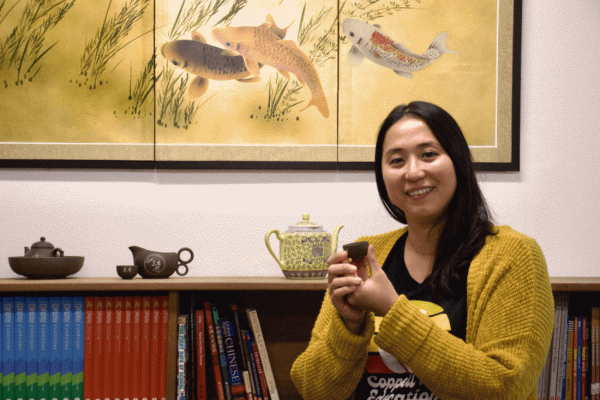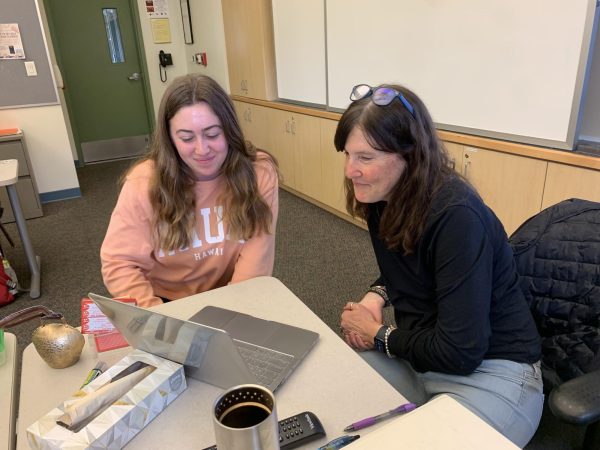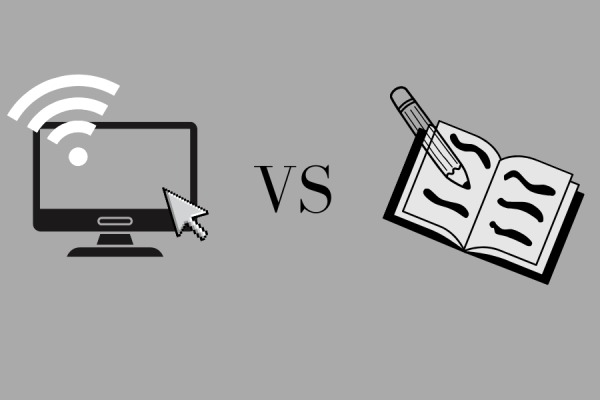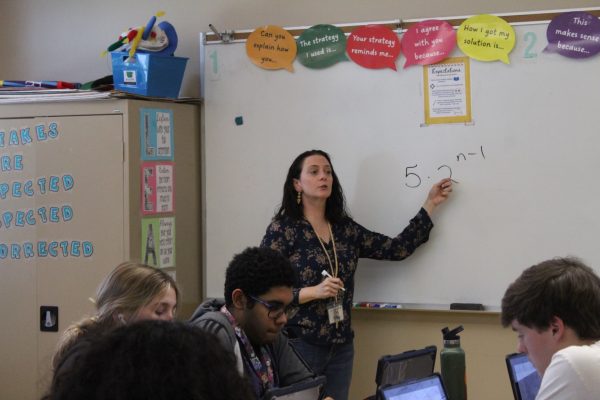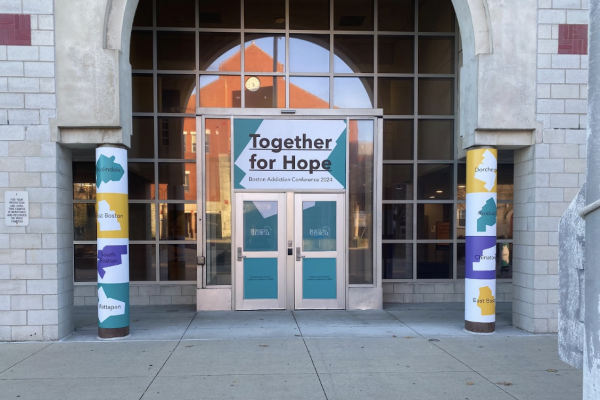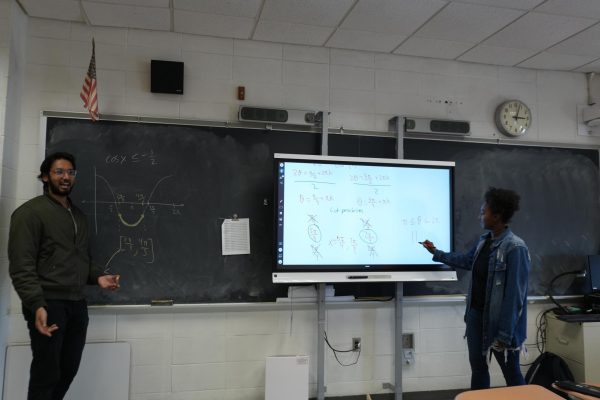COVID-19 collateral
Despite the return to a typical school structure and schedule, COVID-19 is still significant in the lives of students. As the school year continues, it is more apparent that the pandemic’s effects are not limited to just public health. Through extracurricular engagement, social isolation, classroom etiquette and energy levels, it is evident that the COVID collateral will be present longer than expected.
The lasting social and emotional impact of the pandemic on students.
October 26, 2021
Freshman involvement leaves student activities unfulfilled
Freshmen have been impacted by the pandemic more than most understand. As we enter the school year, students of every year get back into the groove of fully in-person learning and extra curricular activities that come along with it; however, most students aren’t ready to venture out just yet.
Freshman Rebecca Snouffer talked about her experience with being in quarantine for most of her middle school career and the effects that has had on her, as well how technology made it harder for her to make connections.
“I went to O’Neill, [the lockdown] happened March 13, I was in seventh grade [at the time]; about a month into eighth grade [was when] we went into hybrid. [COVID-19] made it really hard to make friends during Zoom and then it was hard to stay in touch with your friends that you already have because nothing is going on,” Snouffer said.
Freshmen aren’t always the audience when it comes to DGS involvement when in reality that’s where students branch out into their interests.
Speech coach Christopher Blum, talked about the wave of incoming freshmen and the decrease in after school activities.
“I have noticed a decrease in engagement in the freshmen coming in; I believe it has to do with not being in school because of the pandemic. I think they feel not as connected with our community as normal freshmen would, with all of the beginning of the year events that we have and the work that we do at the junior high level to come and visit for [mad dash]. They are missing that school community right off the bat,” Blum said.
Senior focus frenzy
While the autumn leaves are falling, high school seniors’ anxiety surrounding college applications is continuously rising. COVID-19 has impacted students in many ways, but for seniors, the lack of focus on college seems all encompassing. Application due dates are fast approaching and both seniors and counselors are finding ways to stay on track despite COVID’s best efforts to slow students down.
DGS has yearly presentations in place to help students concentrate on their futures all through high school. Counselors continue to provide these resources to students in hope that they will utilize them to their advantage. Counselor Kate Blader believes that the yearly focus presentations are enough to keep students thinking about college.
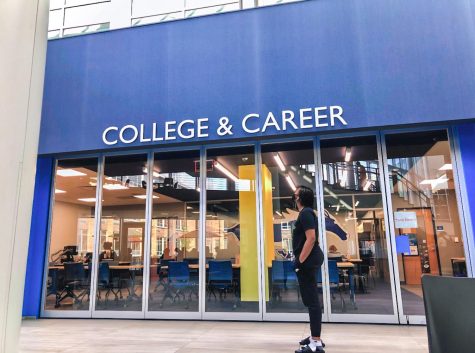
“Junior year and senior year we really talk a lot about the college application process as well as other career options: military, work, etcetera. Those things are always in place and they remained in place throughout the pandemic and still are today,” Blader said.
A large number of seniors are finding it difficult to jump into the grueling process of college applications. COVID left students and staff more disconnected than ever before which has affected communication. Senior Grace Dietrich feels that application guidance came later than preferred.
“Since we weren’t in school last year we kinda got thrown into it,” Dietrich said.
College and Career Counselor Lavon Robinson shared how the college and career team struggled finding ways to keep students informed.
“It was very difficult. We had to change how we gave out information. We set up a google classroom for [the class of] ‘22 and ‘23. A lot of it was us as college counselors figuring out how [COVID] was changing things,” Robinson said.
With both students and counselors figuring out how to navigate the application process in the new world that COVID has created, there is still hope that seniors will be able to catch up before the Nov. 1 deadline.
The isolating return from isolation: Post-pandemic comfort stunts social regrowth among teenagers
Zoom meetings and FaceTime calls became people’s regular idea of socializing for almost 19 months and now that we’re moving back to “normal life” the increase of social and general anxiety has been exponential, especially amongst teenagers.
According to the C.S. Mott Children’s Hospital National Poll on Children’s Health, 46% of parents with adolescents have seen new or worsening symptoms of social anxiety and depression since the pandemic started. As the idea of isolation became just a part of everyday life, the fact of loneliness became more and more relevant.
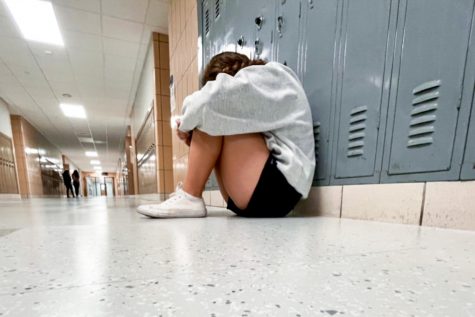
Senior Kyla Wasler touches on how much her social life had changed throughout the many lockdowns we experienced.
“I don’t really go out as much as I used to. Now, I just want to stay at home all the time; It’s more comfortable for me,” Wasler said.
Wasler explained how her motivation from school to hanging out with friends has been jeopardized over the time of the pandemic. She further shared how the comfort of her home has created a lack of inspiration in the social aspect of her life.
“I don’t enjoy it as much as I used to, I mean everyone kind of changed in how they act around others and it’s so much more difficult to gain that motivation to go and talk to someone, I guess it’s just easier to stay home,” Wasler said.
The comfort of home has become the “easy” way out as Wasler explained. More and more teenagers have avoided the task of practicing their social skills with their peers by entering the black hole of Netflix and social media, ultimately regressing their motivation.
DGS Psychologist Teriauna Bland shared the effects of COVID-19 she has seen in her students, as well as positives, in terms of adjusting to this new normal.
“[I have seen] the inability to socialize as they would like due to feeling there is an immense amount of homework they have to complete or are adjusting to complete,” Bland said.
Students have also started to express that they are finding [new] ways to stay connected to their friends and as well making new [ones]
— Teriauna Bland
Bland further expresses her belief of the cause of this new widespread anxiety and loneliness amongst teens. She adds a different view, possibly implementing a positive outlook on how adolescents in their old learning environment.
“The pandemic and specifically quarantines have impacted [people] in many different ways. For some with social anxiety disorder, remaining home without the expectation of being around others may have felt advantageous… While [we] may argue the potential for some to practice skills in a physical setting presented a challenge, perhaps working in a virtual setting from the comfort of home or a more familiar environment presented opportunities for exponential growth [for learning],” Bland said.
Lately, we have seen our society return to a world of normality with the exponential rate of vaccines and mask-mandates. DGS Psychologist Catherine Robinson, explains the very first steps on how to gain those social skills back.
“[The] first step is identifying [whether] there’s a struggle/problem or not. Self awareness can help a person feel empowered and integrated with life, people, and society again. [It’s all about] taking baby steps,” Robinson said.
Bland and Robinson encourage those who need extra help, or just someone to talk to, to visit the counseling center at DGS, where an adult can help.
DGS’s exhausting new reality
Students all across DGS are suffering from one of the most common side effects of COVID-19 collateral; fatigue. Students have essentially lost the motivation to get things done. To some students, it seems to take double the effort to complete a single task.
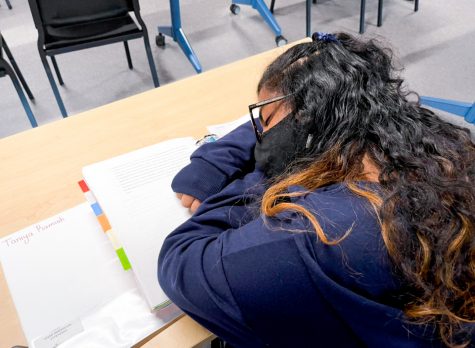
Students are so used to learning in the comfort of their own homes; they’re not used to the discomfort of being submerged in a classroom. Due to the rules pertaining to homework loads being more lenient last year, the student body is not acclimated to a faster-paced classroom.
Senior Jo Stewart elaborated on how physically and mentally draining coming back to school in-person is for them.
“Coming back to school after COVID has definitely been difficult because my body isn’t used to doing so much at one time. I feel like I’m not only physically drained but also mentally because I’m interacting with people so much more,” Stewart said.
This problem isn’t just chalked up to pure laziness, however that occasionally may be the case. The problem is much deeper than that; the year-long lockdown has rewired all of our brains. According to a study done by the Kaiser Family Foundation, COVID has caused a 30% increase in mental illnesses such as depression and anxiety.
This increase makes the fast-paced school environment nearly impossible. Mental health counselor Taylor Quinn noticed the increasing trend of mental illness in regards to life after COVID.
“I’ve noticed that people are experiencing more anxiety and depression in regard to expectations that are being placed on them, as it feels like the expectations are unrealistically too high but are unaddressed as being such,” Quinn said.
Now with students being shoved back into whatever form of normalcy this is, their brains didn’t get time to heal or catch up. The question people want to know– is it possible to rebound, and if so, at what cost?
Exchanging masks for maturity: The demise of school etiquette
After more than an entire year of remote learning, it is clear that some of the pre-pandemic classroom etiquette has gone missing. Cellphone usage, speaking over teachers and failure to follow instructions are only at the tip of the iceberg when it comes to student behavior now that school is back in session.
The results of remote learning impacted the usual classroom routine for some teachers more than others. Choir Director Joy Belt-Roslieb spoke to the challenge that COVID-19 posed in her classes and how it continues to be a roadblock in the classroom today.
“I think remote learning in itself is its own challenge, but I think students found freedom to behave… and really not paying attention to teachers while we were Zooming. There has been a definite challenge to get students back into a centered-in learning process,” Belt-Roslieb said.
Belt-Roslieb also brought up that not only is there a challenge in getting students back into the groove of learning, but teachers must rebuild the interpersonal connection students have lost in the past year.
“So here we’ve been apart for 18 months and I don’t want to discourage kids from connecting with each other, but I want to have that balance like, look, you still have to be on task. So again, it’s finding that balance of knowing how important that social-emotional piece is, but we have to get back to school etiquette,” Belt-Roslieb said.
As the school year’s honeymoon phase comes to an end, time can only tell if the pre-pandemic classroom etiquette will be restored.
COVID-19 inspires mental health awareness
It has been over a year and a half since the pandemic started and society has hyper-fixated on the negatives that were brought with COVID-19. While it is impossible to deny that there were detrimental effects from the virus, it is necessary to understand that there have been positives to come from the curve ball that was COVID.
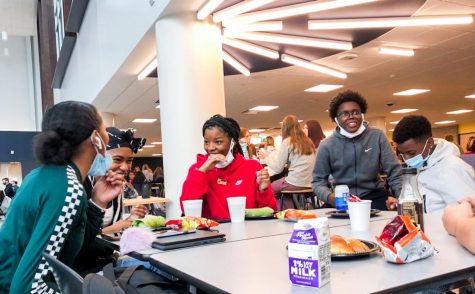
Junior Delaney Turner spoke about how she became aware of her mental health during quarantine.
“I became aware of what I needed, I realized that I am not the best person online and I have to be in-person, so I figured out techniques that I could use to better [myself]. I focused on keeping myself organized and [staying] on top of things even if I didn’t succeed; I was able to focus on myself more than I usually do,” Turner said.
Throughout quarantine, many started focusing more on bettering themselves which included their mental health. COVID affected everyone differently, but most had some change in their mental health and most were able to make that change positive. PE teacher Stephanie Henrikson talked about how COVID brought mental health into the conversation.
“I think [students] are much more cognizant of it now than perhaps before because the pandemic has affected all of us whereas maybe if a student never really had or acknowledged mental health struggles prior. I think everyone realizes that we all go through tough times and this is a tough time that many of us have gone through together and have similarities with experiences that we can relate to over COVID-19, and I think it’s more on our radar than it has ever been before,” Henrikson said.
Henrikson also discussed resources that can further help students with mental health issues.
We can create a bit of space in learning about how to tend to our mental and emotional needs
— Stephanie Henrikson
“Learning about mindfulness is a huge component when dealing with stress and focusing on mental health. Students get a dose of that in the beginning of their health classes and we focus on it quite a bit in stress management [class], and I think learning how to become more aware of our thoughts and feelings helps us to separate from,” Henrikson said.
It is so easy to magnify the negatives of the pandemic and push the positives aside. It is time a light is shined on the increased awareness of mental health as a result of the pandemic.
This story was originally published on Blueprint on October 24, 2021.



























![IN THE SPOTLIGHT: Junior Zalie Mann performs “I Love to Cry at Weddings,” an ensemble piece from the fall musical Sweet Charity, to prospective students during the Fine Arts Showcase on Wednesday, Nov. 8. The showcase is a compilation of performances and demonstrations from each fine arts strand offered at McCallum. This show is put on so that prospective students can see if they are interested in joining an academy or major.
Sweet Charity originally ran the weekends of Sept. 28 and Oct. 8, but made a comeback for the Fine Arts Showcase.
“[Being at the front in the spotlight] is my favorite part of the whole dance, so I was super happy to be on stage performing and smiling at the audience,” Mann said.
Mann performed in both the musical theatre performance and dance excerpt “Ethereal,” a contemporary piece choreographed by the new dance director Terrance Carson, in the showcase. With also being a dance ambassador, Mann got to talk about what MAC dance is, her experience and answer any questions the aspiring arts majors and their parents may have.
Caption by Maya Tackett.](https://bestofsno.com/wp-content/uploads/2024/02/53321803427_47cd17fe70_o-1-1200x800.jpg)
![SPREADING THE JOY: Sophomore Chim Becker poses with sophomores Cozbi Sims and Lou Davidson while manning a table at the Hispanic Heritage treat day during lunch of Sept 28. Becker is a part of the students of color alliance, who put together the activity to raise money for their club.
“It [the stand] was really fun because McCallum has a lot of latino kids,” Becker said. “And I think it was nice that I could share the stuff that I usually just have at home with people who have never tried it before.”
Becker recognizes the importance of celebrating Hispanic heritage at Mac.
“I think its important to celebrate,” Becker said. “Because our culture is awesome and super cool, and everybody should be able to learn about other cultures of the world.”
Caption by JoJo Barnard.](https://bestofsno.com/wp-content/uploads/2024/01/53221601352_4127a81c41_o-1200x675.jpg)





